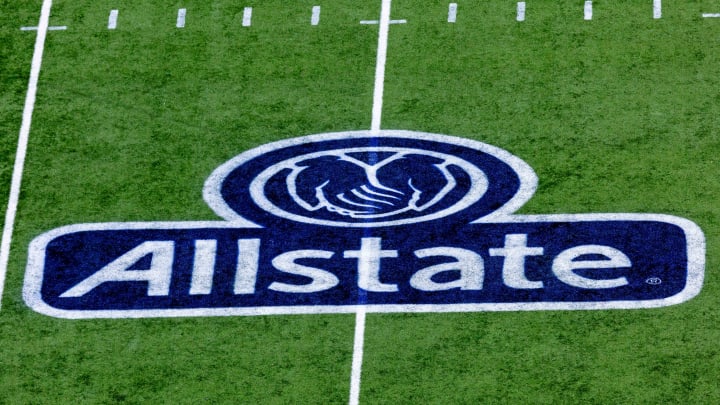Big 12 Could Make Up to $50 Million Annually in Rename to Allstate Conference

Collegiate sports have become a financial arms race. Within the last month, the NCAA has waived the white flag on preserving a system of amateur athletics, previously the central tenant of its competitions, governance, and mission. While not yet finalized, a settlement agreement in the House v. NCAA antitrust lawsuit aims to implement a revenue-sharing system within collegiate athletics. For the first time, student-athletes would be compensated directly by their universities.
This revenue sharing is expected to provide student-athletes NIL compensation for their appearance on game broadcasts. The exact structuring of a new collegiate athletics model remains ambiguous, but one thing is certain: revenue generation at the conference level will be imperative to keep up in a fractured league.
Unlike American professional sporting arrangements, where league revenue is shared to athletes equally through salary caps and scaled salaries, collegiate sports will likely operate at a conference level. This means that for those conferences that have not secured mega media rights deals like the Big 10 or SEC, finding ways to generate additional revenue to pay players a competitive wage through a rev-share model will be necessary to maintain any expectation of national success.
The BIG 12 Conference is slated to pay each member institution roughly $32 million annually in media rights money starting in the 2025 season. This lags well behind the Big 10, whose new media deal will pay its schools a yearly $80-100 million. The $32 million Big 12 payout would have been enough to finance a robust athletic department that could compete at the highest level in the previous system. However, with schools potentially on the hook for direct athlete payment via rev-share, the revenue discrepancy between the Big 10 and Big 12 has removed any notion that the two conferences are equivalent organizations.
Big 12 leadership, noting the immediacy of the current situation, has already created creative solutions to generate new revenue streams. It has been reported that BIG 12 is engaged in a discussion with Allstate to sell the naming rights of its historic conference for a reported $30-50 million annual payout to the conference. While this payout doesn’t close the gap between the Big 10 and newly minted Allstate 12, the deal would supply a surge of cash that could help the conference remain competitive with the ACC.
Big 12 in discussions w/Allstate on a naming rights deal to change league's name, sources told @ActionNetworkHQ. Deal could be worth b/w $30-$50 million annually & name possibilities include Big Allstate Conference or Allstate 12 Conference, sources said https://t.co/Cv22vjhBSx
— Brett McMurphy (@Brett_McMurphy) June 13, 2024
The Big 12 recently lost two of the biggest brands in collegiate sports, Texas and Oklahoma, to the SEC. While the conference was able to poach some PAC-12 institutions during the collapse of the long-standing Power 5 conference, the loss of Texas and Oklahoma is detrimental to the conference's valuation. The Allstate deal seems to be the recipe for maintaining stability and softening the blow to the Big 12, which is fighting to remain at the highest level of collegiate sport.
With a rev-share system, the Power 4 could turn into the Power 2. The Big 12 and ACC are approaching a critical phase where cash creation will determine what tier of collegiate sport they ultimately fall into. However, the need for increased revenue is not solely for current Power 4 conferences; Group of Five schools may be even more incentivized to leverage similar opportunities to shuffle for rank within the new system.
Conference USA, in time with the Big 12, has been reported to be deeply exploring the idea of selling the naming rights to their conference. Conference USA is in talks with Texas-based insurance company Globe Life in a multimillion-dollar annual deal. Conferences will be able to leverage the historic goodwill and status of current members as marketing efforts for large corporations. For many Group of Five conferences, this could keep the lights on within athletic departments at smaller schools in an era of mandated revenue-sharing.
More news: Conference USA is also deeply exploring a multi-million dollar naming rights sponsorship, sources tell @YahooSports.
— Ross Dellenger (@RossDellenger) June 13, 2024
One of the companies under consideration is Globe Life. Possible new league names include Globe Life Conference USA or Globe Life Conference.
Professional franchises, colleges, and others who own large arenas have made it common practice to sell stadium naming rights to corporations for exorbitant amounts of money. Monetizing collegiate conference naming rights seems to be the next evolution of sports commercialization. As collegiate athletics continues to professionalize, so will the environment around it.
